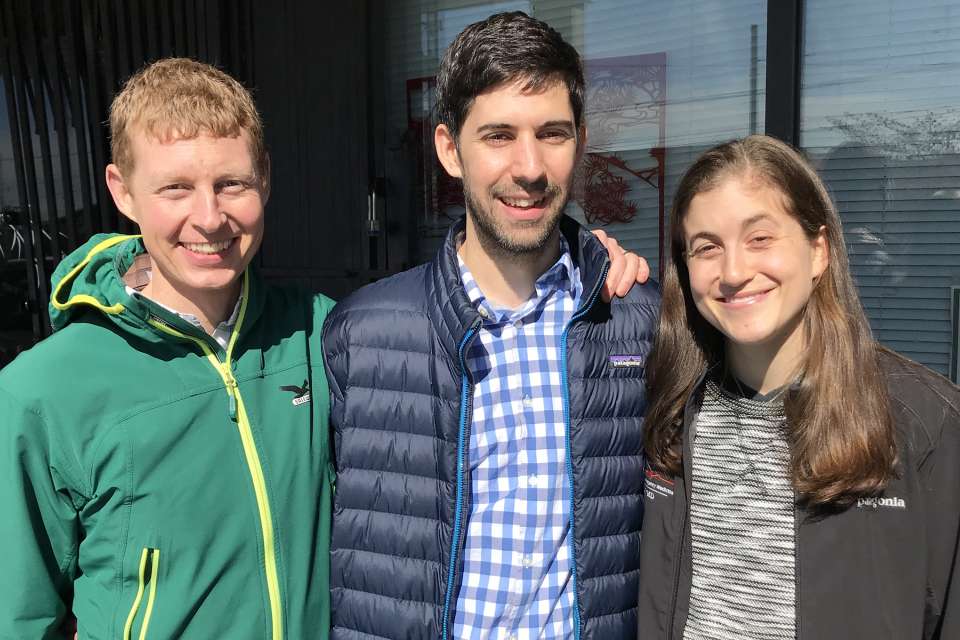This Is What Real-Life Medical Residents Think of TV Hospital Dramas

From “ER” to “Scrubs” and “House,” most of us are familiar with at least one TV hospital drama. We all know these shows take some liberties (doctors don’t typically drop like flies the way they do on “Grey’s Anatomy,” after all). But you may wonder how accurate they are in portraying what it’s like to hold others’ lives in your hands. Are code blues really that intense? And do hospitals truly harbor so many eccentric personalities?
To get answers, we consulted the experts: fourth-year emergency medicine residents Molly Tolins, M.D., Paul Charlton, M.D., and Stephen Sanoja, M.D.
All three residents work in the emergency department at Harborview Medical Center, the bustling county-owned hospital that is managed by the University of Washington and serves as the level I trauma and burn center for the four-state region of Washington, Alaska, Montana and Idaho. If anyone has a unique perspective on the complex, diverse, heartbreaking and inspiring world of medicine, it’s Tolins, Charlton and Sanoja.
“In the emergency department, there are always a hundred things happening at once,” Tolins says. “It can be distracting. Unlike on TV shows, I don’t get to walk out of a patient’s room into a calm environment where I can think exclusively about one patient.”
In what other ways does TV not reflect reality in the emergency room? Here are the residents’ top critiques of hospital dramas—and a couple things they think the shows do well.
They’re often medically inaccurate
Picture this: A patient suddenly goes into cardiac arrest. Nurses and doctors dash into the room. Someone starts performing CPR and within moments the patient’s heartbeat returns to normal. In real life, however, CPR is less like a captivating scene from a hospital drama and more like a cringe-inducing scene from “Game of Thrones.”
“CPR is a violent experience, often breaking people’s ribs, and that still doesn’t mean you’re going to save their lives," Charlton says.
While Seattle has often been referred to as the “best place to have a heart attack” due to first responders like Medic One and hospitals like Harborview, it doesn’t mean that surviving cardiac arrest is as easy as it looks on TV.
“The likelihood of surviving cardiac arrest is a lot lower than Hollywood makes it seems, and that creates a sense of false expectations,” Charlton says.
They sometimes exaggerate and vilify physician behavior
While there may occasionally be that one doctor who yells at everyone or behaves eccentrically, the residents say this isn’t nearly as common as it is on TV. Most people in healthcare are there for a reason, they say, and want to get along with colleagues and make a difference in patients’ lives.
While over-the-top personalities can be entertaining, Charlton admits, they can also be damaging for doctors’ reputations in the real world. One recent example of this is the new show “The Resident,” where one surgeon kills patients regularly due to hand tremors and another gets distracted taking selfies in the OR. Doctors have taken to social media recently to denounce the show, claiming it portrays medical professionals as callous and villainous, particularly where patient care is concerned.
Healthcare isn’t perfect, and constructive criticism that seeks to spotlight a real issue and encourage change that will benefit patients is welcome, Charlton says. It’s when shows don’t have a positive mission at heart that problems can arise.
“Degradation of an entire field creates the potential to change the public’s perception of that field and erode their trust,” Charlton says.
They make it seem like doctors focus on only one patient
In TV shows, doctors often spend a lot of time with a single patient—diagnosing them, treating them, talking with them. Unfortunately, real-world doctors don’t often have the luxury of getting a lot of time with one person, Sanoja says.
“The amount of time we spend on an individual is so much less, especially in the emergency department. One doctor is typically helping between five and 15 patients at the same time,” he says.
They make diagnosis look easy
In real life, making a correct diagnosis doesn’t magically make everything fall into place like the reveal in a Sherlock Holmes mystery. Diagnosis is just the first piece of the puzzle and can be tricky and time-consuming enough on its own. Finding the best treatment for a patient is the next piece, and it isn’t always straightforward either, Tolins says.
“There’s this portrayal of diagnosis as a golden key to health, but often that’s not the case in reality,” she says. “Even when we do have answers, there isn’t always an easy fix.”
Instead, Sanoja says, doctors will work with patients and keep them informed throughout the process, letting them know if it looks like a diagnosis may be hard to come by. In that case, doctors focus on continuing to search for answers and progress in the patient’s treatment—while understanding how frustrating it can be for patients not to have clear answers.
They don’t always emphasize teamwork
In TV shows, a doctor might seem more like a superhero, swooping in to save the day all on their own. Realistically, doctors are part of a team of many medical professionals all working together and consulting with each other on the best treatment options for patients.
And if anyone is going to be portrayed as a hero, Sanoja says it ought to be nurses.
“One thing shows don’t really address is that nurses are the ones providing the most hands-on patient care,” he says. “Nurses are a crucial part of the team, and they do the hardest work.”

While hospital dramas aren’t always accurate, all three residents still like them for how entertaining they can be. Plus, there are a couple of things they get right:
They explore the often bizarre (and fascinating) world of medicine
Those patients on medical dramas that have weird one-in-a-million things happen to them? They aren’t necessarily that unusual, especially in a trauma hospital’s emergency department.
“We have a skewed perspective because we work in the emergency department, but we see our share of bizarre cases—stuff I never read about in a textbook during medical school,” Tolins says.
Turns out, sometimes reality is stranger than fiction. For example, Charlton has had several patients who had part of their body impaled after falling from a roof onto a fence. (Ow.) And Sanoja has treated many people who have swallowed seemingly un-ingestible objects such as headphones or pencils.
As odd or disturbing as these kinds of stories may be for people who don’t work in the medical field, they are exactly the reason why many doctors do what they do—because they are fascinated by complex or unusual cases and want to be able to help. This is especially true in emergency medicine.
“Each day, I never know what I’m going to see. I like being able to take care of anyone who walks through the door,” Sanoja says.
They capture how dedicated doctors are
Many people who work in healthcare will tell you there’s something special about the field and the people who choose it. Doctors and other healthcare providers are often seeing people during their worst moments—and they want to be there for them and see them through it.
This dedication comes with a price. Shows often dramatize the ways a doctor’s career interferes with their personal life, and the sentiment is very much felt by many real-life doctors, Sanoja says. Not only can it be difficult to balance work and family obligations, but it also isn’t always easy to leave work behind once at home.
“Shows highlight the emotional impact on providers of caring for people who are ill or dying, or when an error is made. Having that message of how the work does personally impact providers is a positive aspect of the shows that rings true for me,” Tolins says.

 Healthy ideas for your inbox
Healthy ideas for your inbox





